External Bacteria Structure
1/33
There's no tags or description
Looks like no tags are added yet.
Name | Mastery | Learn | Test | Matching | Spaced |
|---|
No study sessions yet.
34 Terms
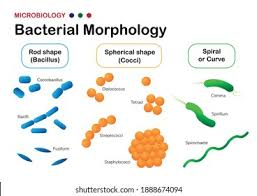
What are the shapes and arrangements of bacteria?
cocci (circular)
Bacilli (rod-shaped)
spiralia (spiral)
filamentous
fruiting
arrangements
singles
diplo (pair)
staphlylo (clusters)
tetrad (3)
strepto (chains)
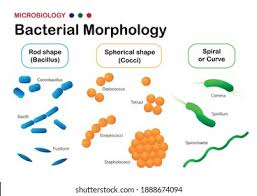
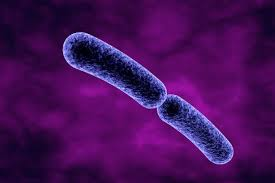
What shape/arrangement is this bacteria?
diplobacilli
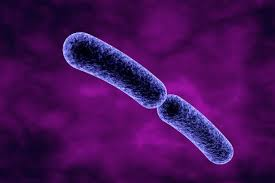
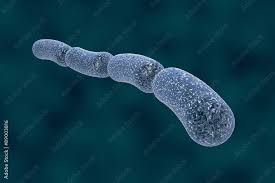
What shape/arrangement is this bacteria?
streptobacilli
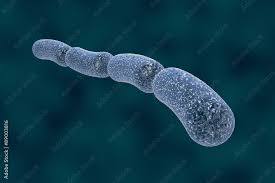

What shape/arrangement is this bacteria?
staphylococcus
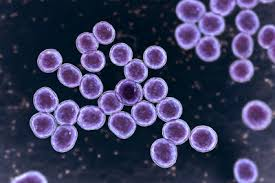
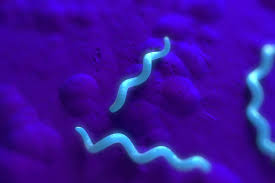
What shape/arrangement is this bacteria?
spirilla
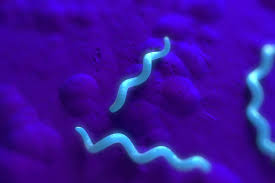
approximately how big is a
red blood cell
typical bacteria (ex. E coli)
streptococcus
virus
red blood cell - 7um
typical bacteria (ex. E coli) - 4um
streptococcus - 1um
virus - 20 to 400nm
What are the main functions of the bacterial cell wall?
maintain turgor pressure (osmotic balance)
protection from host/environment
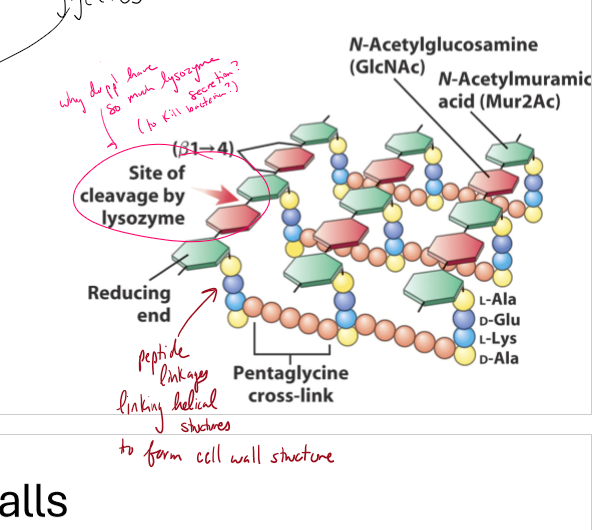
Describe the peptidoglycan structure
1 strand of peptidoglycan repeats NAG and NAM disaccharides
peptides extend out from backbone
forms a helical molecule crosslinked by glycenes attached to NAM or through covalent bonds between amino acid peptides (Depends on bacteria)
What phyla are gram positive cell walls most often seen in?
firmicutes and actinobacteria
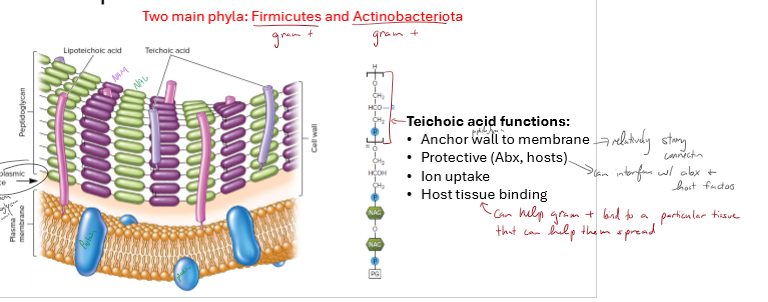
What is teichoic acid?
in gram positive cell walls
polymers covalently connected to peptidoglycan chains
extend from plasma membrane surface through peptidoglycan layer
present in gram positive bacteria
anchor peptidoglycan wall to membrane
protection against antibiotics and host immune response
perform ion uptake
can help bacteria bind to a bacteria tissue for spreading
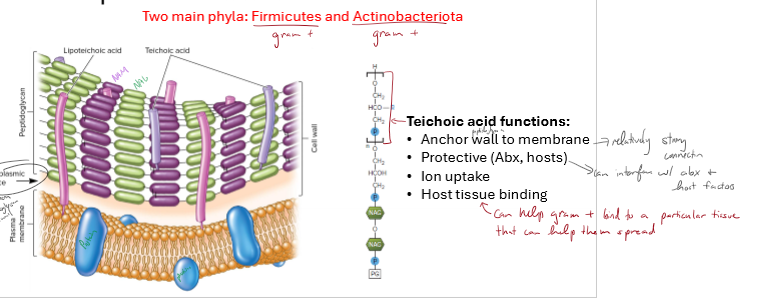
What is the periplasmic space?
The space between the plasma membrane and beginning of outer membranes of bacteria

What are porin molecules?
transport across outer membrane through passive diffusion
hydrophilic channel
integrated in outer membrane
in gram-negative cells

How do gram positive and gram negative cell walls differ?
gram positive - thick peptidoglycan layer, teichoic acid for support, protection and binding,
gram negative - outer membrane above thin peptidoglycan layer, porin, LPS, outer membrane receptors
What is LPS (lipopolysaccharide)?
component of outer membrane of gram-negative bacteria
contributes to overall negative charge of outer membrane
stabilizes outer membrane
creates permeability barrier
protect from host defense (pathogens)
potential target for host; often changed to avoid effective immune responses
3 parts - Lipid A/Endotoxin, core, O antigen
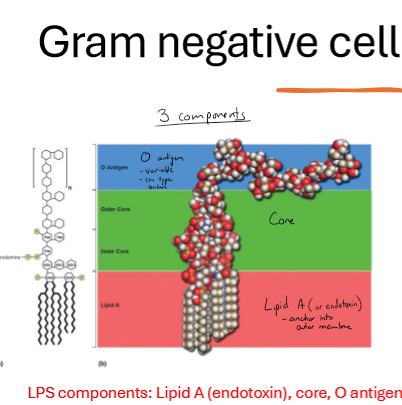
What are the 3 components of the LPS?
Lipid A (endotoxin) - anchors into outer membrane
core
O antigen
Is porin present in gram positive or gram negative bacteria?
gram negative
What is osmotic lysis?
Osmotic lysis is the rupture of a cell due to an influx of water, causing the cell to swell and burst, often occurring in hypotonic environments.
What happens when penicillin or a lysozyme breaks/inhibit cell wall syntheses?
forms protoplast (w/messed up cell walls)
cant regulate osmosis in cells and bursts (lysis)
What are mycoplasma?
Mycoplasma are a group of bacteria that lack cell walls, making them resistant to antibiotics that target cell wall synthesis
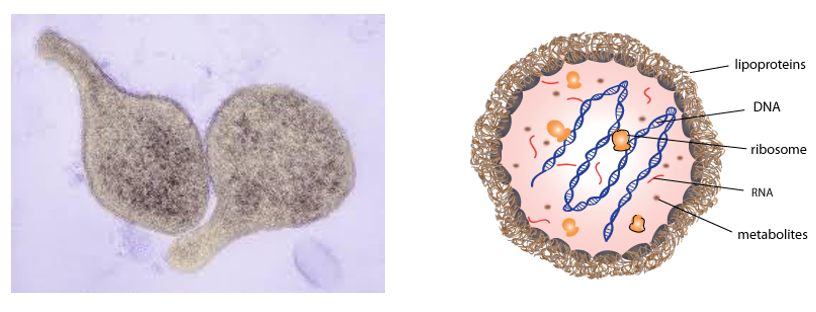
What are capsules?
well organized layers firmly attached to outside of cell wall
usually polysaccahride
not vital for growth (can live without)
virulence factors
what is a slime layer?
zone of unorganized material on outside of cell
not very well attached
protection, adhesion to surface
What is an S layer?
ordered surface covering on outside of cell
protein or glycoptrotein composition
provides shape and protection
some virulence factors
useful for adhesion
What are glycocalyx?
general term for any outer covering on surface of cell wall or outer membran eof bacteria

What are Pili?
hair-like filamentous appendages on surface of bacteria
for attachment, DNA exchange, motility
Sex pili for conjugation
shorter and thinner than flagella
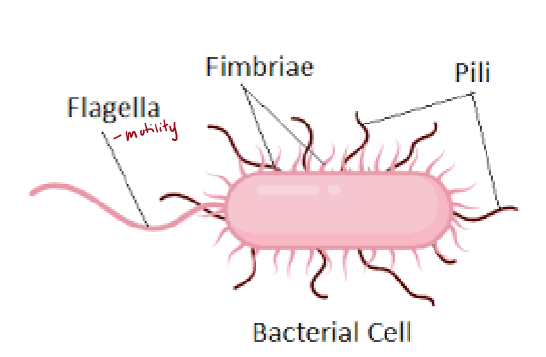
What are fimbriae?
filamentous protein structure on surface of bacteria
shorter than pili
for attachment
What are flagella used for?
mostly motility, but also attachment and as a virulence factor
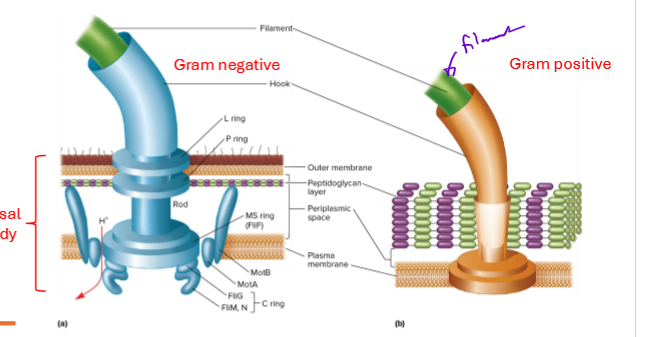
Describe the 3 parts of flagella
filament - made of flagellin protein subunits; ringed structure
Hook - projects filament from cell; attached to basal body
basal body - extends from outer membrane/peptidoglycan to proteins in plasma membrane; motor part, powers turning through e- transfer


What are the 4 types of flagellar distribution?
monotrichous - 1 flagella
lophotrichous - multiple flagella on one end
amphitrichous - flagella on both ends
peritrichous - flagella all over
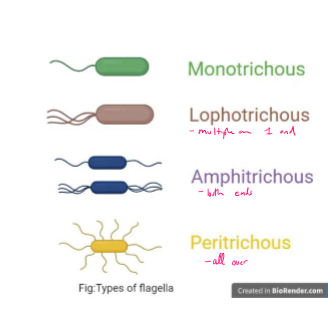
What are the types of flagellar movement?
counterclockwise
clockwise
swarming (cells move in unison across surface)
What is chemotaxis?
nonrandom movement in response to stimuli; go towards food or away from danger

How do spirochetes move and why?
move in an undulating pattern
flagella wrap around inside periplasmic space
What are endospores?
Highly resistant structures formed by some bacteria to survive harsh conditions, allowing them to endure extreme temperatures, desiccation, and radiation
have specialized spore coat
no division (dormant)
germinate when conditions improve
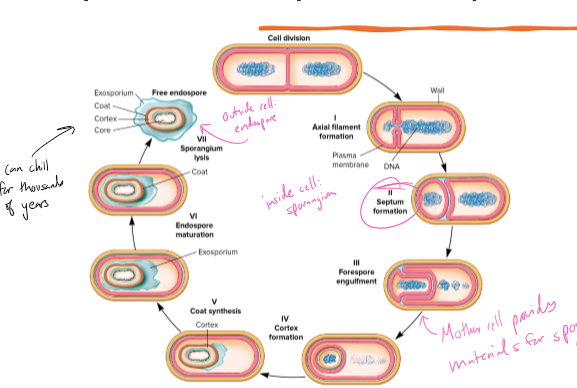
Briefly describe sporulation
process of forming endospores from Mother cell
How large are eukaryotic cells typically?
Eukaryotic cells are typically 10 to 100 micrometers in diameter, larger than prokaryotic cells.